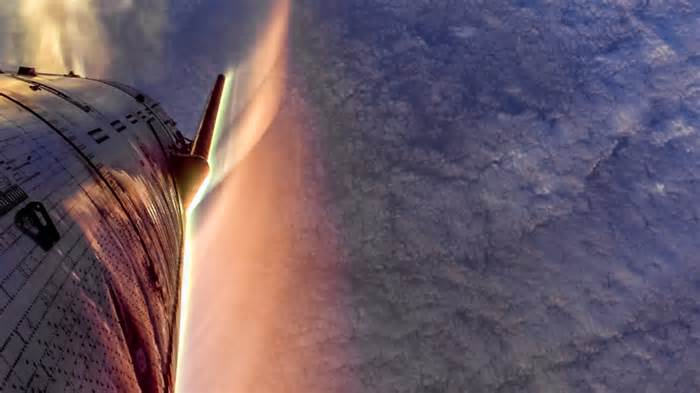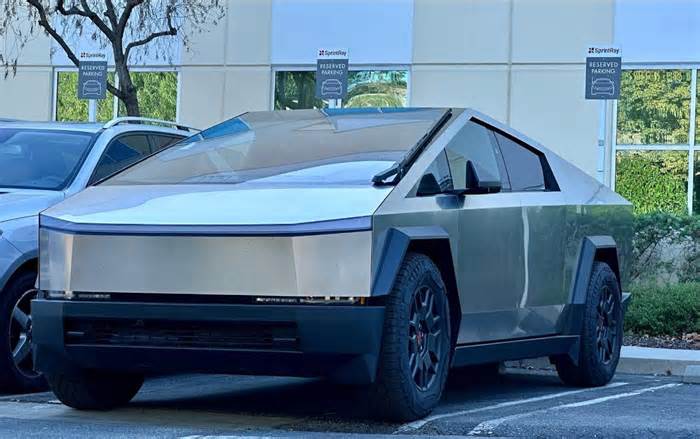
SpaceX and NASA Learned to Land on Mars by Studying Falcon 9 Landings
- by NextBigFuture
- Nov 25, 2024
- 0 Comments
- 0 Likes Flag 0 Of 5

On September 29, 2013, SpaceX performed the first supersonic retropropulsion (SRP) maneuver to decelerate the reentry of the first stage of their Falcon 9 rocket.
NASA asked if their EDL (entry, descent, and landing) engineers could watch and study SpaceX’s data, and SpaceX agreed. Beginning in 2014, NASA and SpaceX worked together for three years. They SRP analyzed SpaceX Falcon 9s for the NASA Propulsive Descent Technology (PDT) project. The F9 boosters were outfitted with special instruments to collect data specifically on portions of the entry burn which fell within the range of Mach numbers and dynamic pressures expected at Mars. Additionally, there were visual and infrared imagery campaigns, flight reconstruction, and fluid dynamics analysis.
There is a lot of fuel management issues for a SpaceX Mars landing. This is reviewed in the video below. If there was a fuel depot created on Deimos (Mars Moon) then it would become far easier and safer to land on Mars.
Mars’ thin atmosphere (1% of Earth) provides challenges not found on Earth or the Moon. A large, heavy spacecraft streaking through Mars’ thin, volatile atmosphere only has just a few minutes to slow from incoming interplanetary speeds to under Mach 1, and then quickly transition to a lander to slow to be able to touch down gently.
Using thrusters creates a shock front ‘bubble’ created around the vehicle by firing the engines somehow insulates the spacecraft from any buffeting, as well as from some of the heating.
EDL engineers now believe that SRP is the only Mars entry, descent and landing technology that is intrinsically scalable across a wide range and size of missions to shed enough velocity during atmospheric flight to enable safe landings. Alongside aerobraking, this is one of the leading means of landing heavy equipment, habitats and even humans on Mars.
There are still multiple unknowns for landing a spaceX Starship on Mars.
How a big ship such as SpaceX’s Starship would be steered and flown through Mars’ atmosphere?
Can fins be used hypersonically or will the plasma thermal environment melt them?
The amount of debris kicked up by large engines on human-sized ship could be fatal, especially for the engines you’d like to reuse for returning to orbit or to Earth, so how do you protect the engines and the ship?
Mars can be quite windy, so what happens if you encounter wind shears or a dust storm during landing?
What kind of landing legs will work for a large ship on Mars’ rocky surface?
Brian Wang
Brian Wang is a Futurist Thought Leader and a popular Science blogger with 1 million readers per month. His blog Nextbigfuture.com is ranked #1 Science News Blog. It covers many disruptive technology and trends including Space, Robotics, Artificial Intelligence, Medicine, Anti-aging Biotechnology, and Nanotechnology.
Known for identifying cutting edge technologies, he is currently a Co-Founder of a startup and fundraiser for high potential early-stage companies. He is the Head of Research for Allocations for deep technology investments and an Angel Investor at Space Angels.
A frequent speaker at corporations, he has been a TEDx speaker, a Singularity University speaker and guest at numerous interviews for radio and podcasts. He is open to public speaking and advising engagements.
Categories
Please first to comment
Related Post
Stay Connected
Tweets by elonmuskTo get the latest tweets please make sure you are logged in on X on this browser.
Sponsored
Popular Post
Middle-Aged Dentist Bought a Tesla Cybertruck, Now He Gets All the Attention He Wanted
32 ViewsNov 23 ,2024
Tesla: Buy This Dip, Energy Growth And Margin Recovery Are Vastly Underappreciated
28 ViewsJul 29 ,2024






 Energy
Energy



















